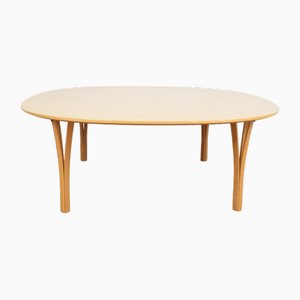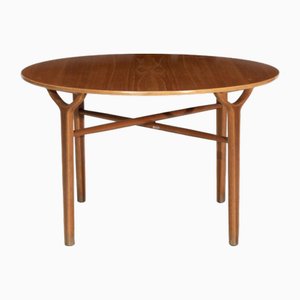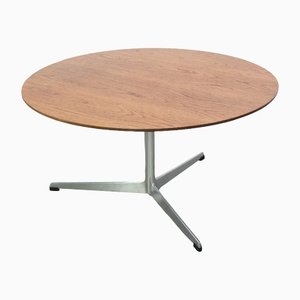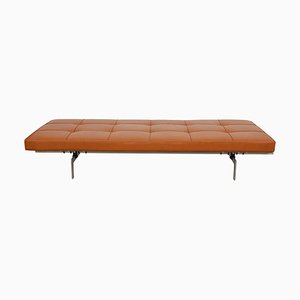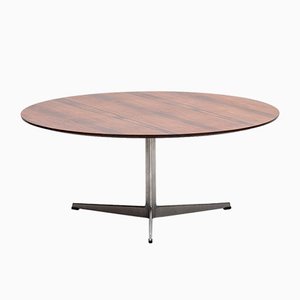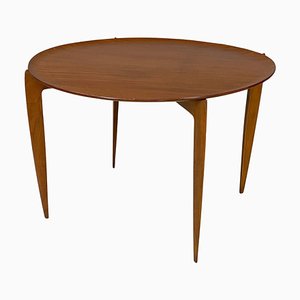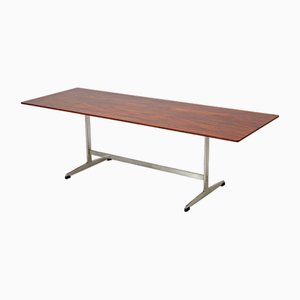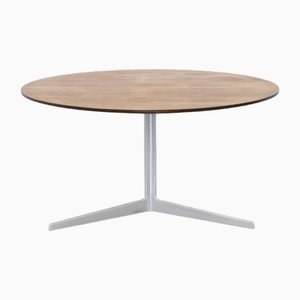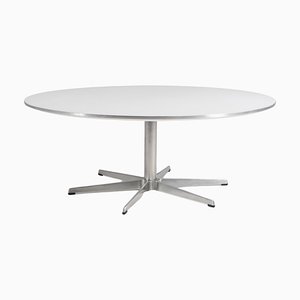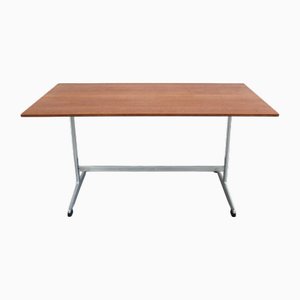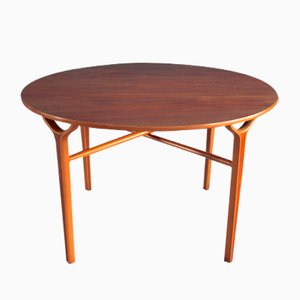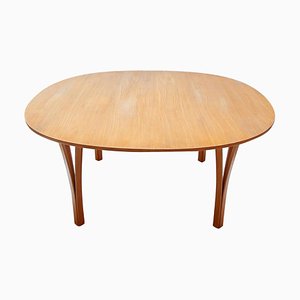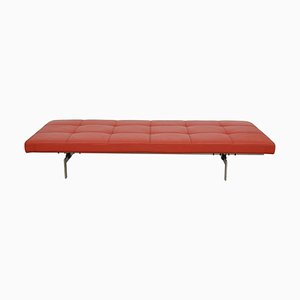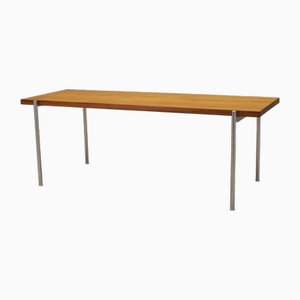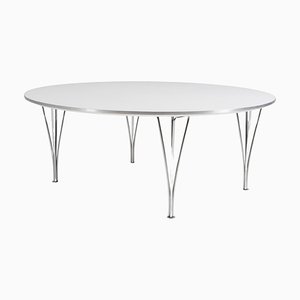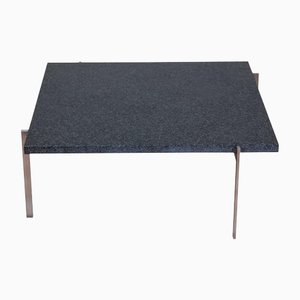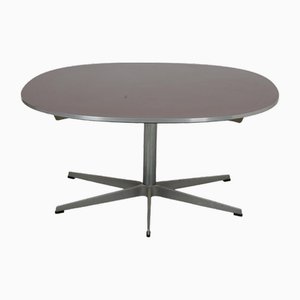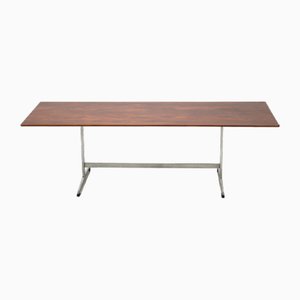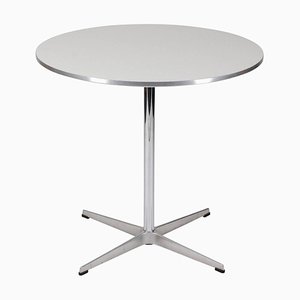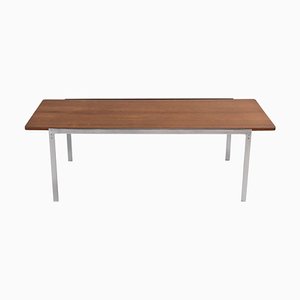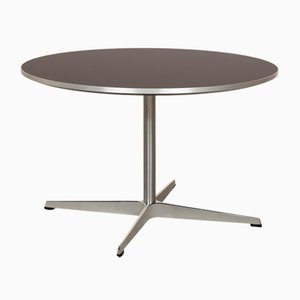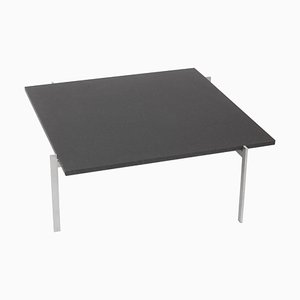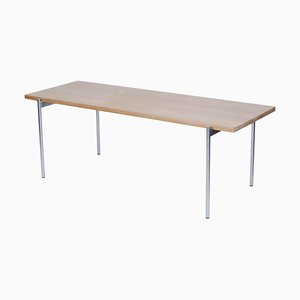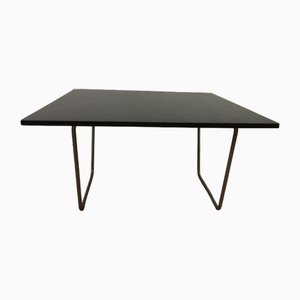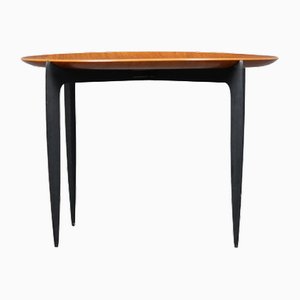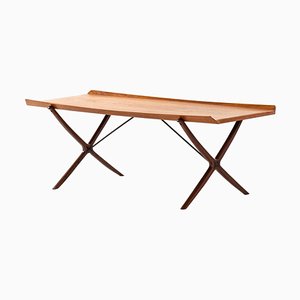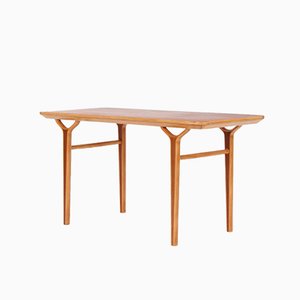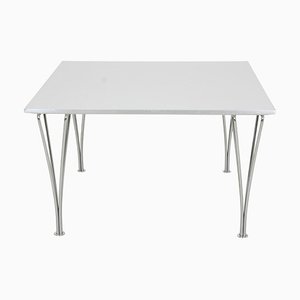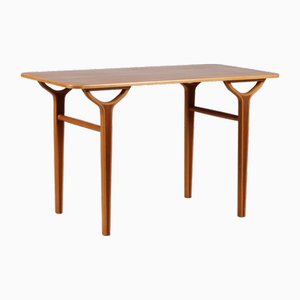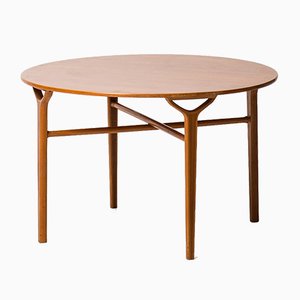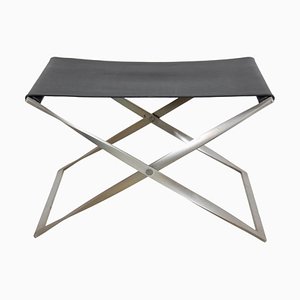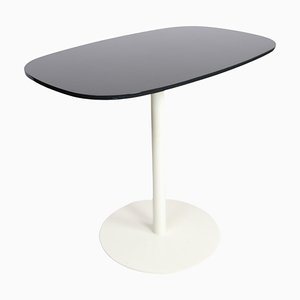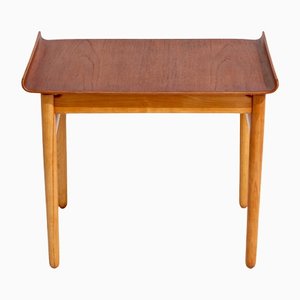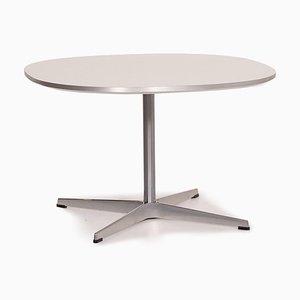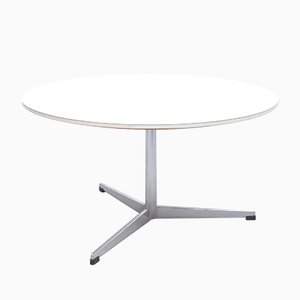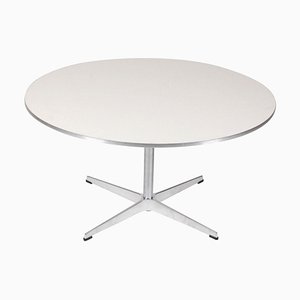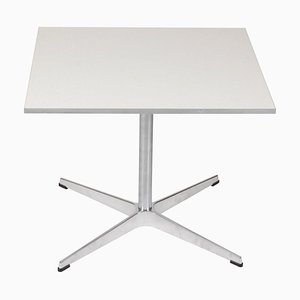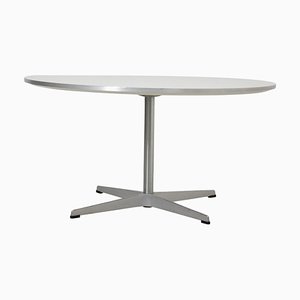
Danish cabinetmaker Fritz Hansen founded his eponymous furniture manufacturing company with his son Christian in Copenhagen in 1885. The first three decades were dedicated to hand-making wood and iron frames for upholstered furniture. In 1915, however, Christian began to introduce industrial processes, such as steam-bending wood, which enabled the family business to mass-produce at a larger scale.
In 1932, Christian brought in his own sons, Fritz and Søren, who updated the product line to include more modernist styles, like Søren’s Thonet-inspired DAN Chair (1930) and a cantilevered wicker and tubular steel chair by architect Mogens Lassen (1933). Other early classics in the Fritz Hansen catalog include Kaare Klint’s Church Chair (1936), Hans Wegner’s China Chair (1944), and Børge Mogensen’s Spoke Back Sofa (1945).
During the 1950s—thanks especially to the contributions of architect Arne Jacobsen—Fritz Hansen entered its golden era, creating some of the most iconic Scandinavian designs of the 20th century. Arne Jacobsen’s Ant Chair (1952), Swan Sofa (1958) and Egg Chair & Ottoman (1958), as well as later designs by Verner Panton, Piet Hein, and Grete Jalk, all helped to cement Fritz Hansen’s legacy as one of the most beloved producers of high quality, simple-yet-elegant, Danish modern furniture.
In 1979, after 107 years of family ownership, Fritz Hansen was bought out by Skandinavisk Holding and is now known as The Republic of Fritz Hansen. Pieces from the company’s long history can be found in nearly every design museum collection there is, from MoMA and Cooper Hewitt in New York to the Powerhouse Museum in Sydney. Arne Jacobsen’s collaboration with Fritz Hansen was the subject of the Siéntate Siéntete exhibition, hosted by the Chamber of Architects in Madrid in 2010.
* All images courtesy of Republic of Fritz Hansen.

